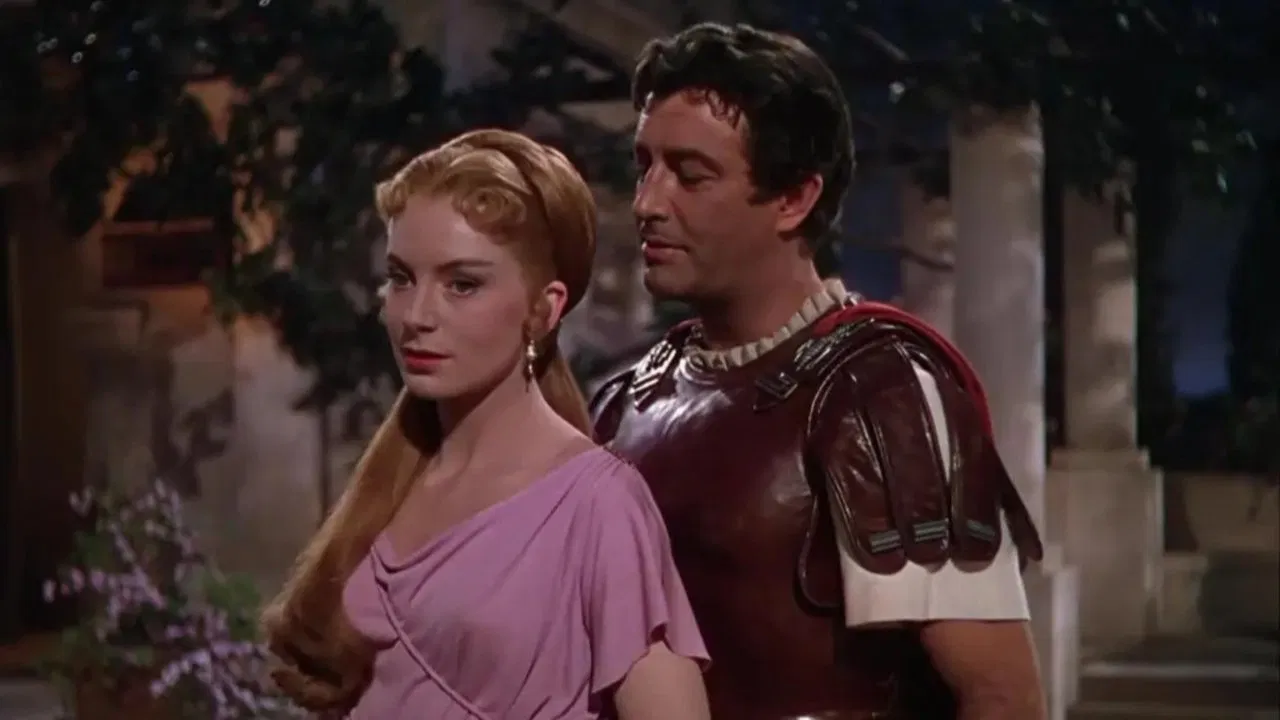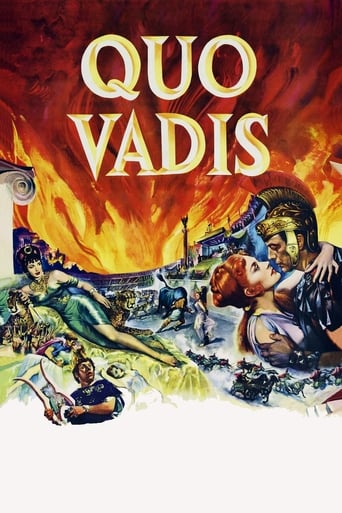

Quo Vadis is an engaging costume drama about life in Nero's Rome.The film is a love story between a roman soldier and a captive Christian woman. It is about the conflict between the pagans and the Christians and the persecution of Christians under Nero's rule. It is about Nero and his relationship with his sister and Petronius (who wrote Satyricon). There are a few sub plots as well - one involving Petronius' intense love affair with a slave (played by Martina Berti).The Christians in Rome look down on the debauchery of the pagan rulers while the pagans look at the Christians with a certain amount of fear. In a prolonged scene, a Christian priest conducts a secret meeting with some underground Christians. Parallels can be drawn to today's world where Muslims look down on the debauchery of the Westen world while the West consider Muslims to be backward.The action is limited to a chariot chase sequence and then the bloody finale in the coliseum. Quo Vadis is more of a drama than an action film like BENHUR or GLADIATOR. But the coliseum scene is spectacular. While not as opulent as CLEOPATRA, there are many epic scenes and long shots involving thousands of extras.I watched it in two sittings. I was impressed by Leo Glenn as Petronius. Deborah Kerr was very erotic even when she played a tame but devout Christian woman. Peter Ustinov nailed the role of the boorish Nero physically. But his dialog delivery was too theatrical. Marina Berti was nice eye candy. Robert Taylor was effortlessly macho as the Roman soldier.I bet Martin Scorsese loves this film.(7/10)
... View MoreBased on the 1896 book by the same name, "Quo Vadis" is an outstanding example of the 'biblical epic'. Similar to Ben-Hur (originally entitled Ben-Hur: A Tale of the Christ), Quo Vadis tells a tale the beginnings of Christianity against a backdrop of Imperial Rome. The acting is good, although other than Peter Ustinov's Nero and Leo Genn's Petronius (both entertaining), the characters are mostly stereotypes (the hero, the villain, the noble victim, the jilted women etc.) Deborah Kerr makes a lovely, although somewhat unengaging, Lygia (and unfortunately, clothed and tied to a pole at the climax, rather than naked and tied to the bull as she is in the book). The production is outstanding, and although the special effects are weak in places (especially composite shots and some backdrops), the burning of Rome is very well done. I am still amazed at what could be put on film before the advent of CGI.
... View MoreQUO VADIS is a very ambitious film spectacle of questionable quality. This is a kind of combination of facts and historical and biblical context. The film offers a fairly good set design, sound, soundtrack and great costumes. Historically - epic moments are well highlighted. This three-hour film offers exceptional dynamism and narrative clarity. However, despite the, until then, an unprecedented visual splendor and excitement of the film are frequent moments of verbal boredom, banality, historical pretentiousness and an indication of sex.The story boils down to the antagonistic relationship Roman generals and converts to Christianity, the bloody rule of mad Emperor Nero and religious spices. Realizing at the same time intimate drama of two people and the spectacular scenes of historical events, such masterful staging of Nero's burning of Rome and the events at the Coliseum, LeRoy is presented actually a classic love story, no matter what its context has an epic importance, both in terms of history, and as far as religion.The film shows the extremes of human madness, brutality, morbidity and cynicism on the one hand. On the other hand extremes of human justice, commitment, faith and goodness. I think that so many things in the film well conceived and unfortunately remained incomplete.The most complete character is Petronius (Leo Genn), who cynical bickering his supervisor creates knowledge about the reality. Convincing and touching is his fragile romance with a slave Eunice (Marina Berti).Peter Ustinov as Nero is in certain parts of the film quite interesting. However, this restraint, madness and screaming become irritating and annoying. In this character has no visible changes. Treadmill is a real denominated.Robert Taylor (Marcus Vinicius) and Deborah Kerr (Lygia) are very solid in their performances. Their romance carries strong emotion and despite acting unconvincingly.This spectacle simply delights and disappoints at the same time.
... View MoreA propaganda flick worthy of Joseph Goebbels.All the old worn out clichés of ancient Rome are trotted out. Some people still think they are true.Christians: gentle, peace-loving, intelligent, honorable.Romans: evil, war-like, cowardly, dumb, sexist.Ustinov's Nero is just as annoyingly inaccurate as Jay Robinson's sniveling Caligula in The Robe.Watch it if you're a Christian who likes to be lied to about how wonderful you are.Anyone with an IQ > 90 will cringe.
... View More